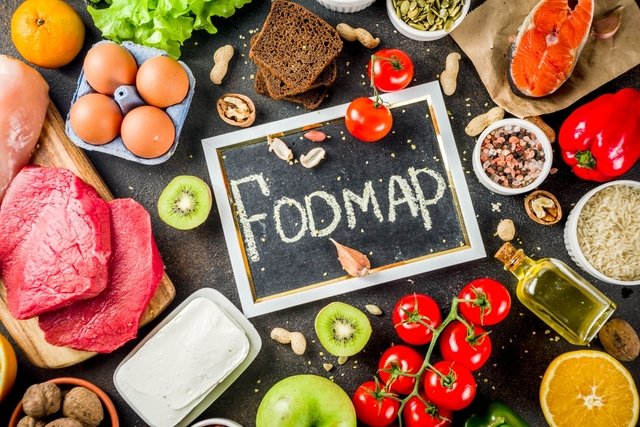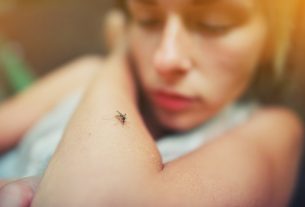The FODMAP diet consists of removing foods high in fructose, lactose, fructo-oligosaccharides, galacto-oligosaccharides and sugar alcohols from your daily diet, such as beetroot, apples, mango and honey, for example.
These types of foods are poorly absorbed by the intestine, in addition to being highly fermented by intestinal bacteria, causing symptoms such as poor digestion, abdominal pain, excess gas and diarrhea, which can alternate with constipation.
Foods rich in FODMAP are normally excluded from diets to control and avoid the symptoms of irritable bowel syndrome, an inflammation in the intestine that can be caused by stress or poor diet, for example. Understand more about irritable bowel syndrome.

FODMAP food list
Foods with a high FODMAP content are classified into 5 groups, as shown in the following table:
In addition to knowing the foods naturally rich in FODMAP, it is also important to check the nutritional label of processed foods. See how to read food labels.
How to follow the FODMAP diet
To follow this diet, you must remove foods with a high FODMAP content for a period of 6 to 8 weeks, paying attention to identify improvements in symptoms of intestinal discomfort. If there is no improvement in symptoms, the diet can be interrupted after 8 weeks and a new treatment should be sought.
If symptoms improve after 8 weeks, high FODMAP foods should be reintroduced slowly into the diet, starting with 1 group at a time and in small portions. For example, start by introducing fruits with a high FODMAP content, such as apples, pears and watermelon, for 3 days, observing intestinal symptoms.
This slow reintroduction of foods is important so that it is possible to identify the foods that cause intestinal symptoms and which can be consumed in small quantities.
Care during the diet
The FODMAP diet can lead to a low intake of important nutrients for the body, such as fiber, carbohydrates and calcium. Therefore, it is important to have the supervision of a doctor and a nutritionist during the diet, to ensure a balanced diet and prevent nutritional deficiencies.
Additionally, it is important to remember that this diet is an effective treatment for many patients with irritable bowel syndrome. However, in some people the FODMAP diet may not offer good results, requiring another type of treatment.
Allowed foods
The foods allowed in the diet must have a low FODMAP content and are:
- Gluten-free cerealssuch as rice, corn, cornmeal, amaranth, quinoa or oats;
- Fruitssuch as tangerine, orange, grape, pineapple, passion fruit, star fruit, kiwi, strawberry, blueberry, papaya, lemon, banana or melon;
- Vegetables and greenss, such as pumpkin, celery, chives, eggplant, olives, red peppers, tomatoes, spinach, zucchini, lettuce, carrots, or cucumbers;
- Lactose-free dairy productssuch as lactose-free milk, lactose-free yogurt, lactose-free cheeses, or mature cheeses such as parmesan, brie or camembert;
- Proteins such as, meat, tofu, fish, eggs or chicken;
- seeds, such as chia, flaxseed, sesame, pumpkin or sunflower;
- Oilseeds, such as peanuts, pine nuts, macadamia nuts, walnuts or Brazil nuts;
- Tuberssuch as cassava, potatoes, sweet potatoes, yams or tapioca;
- Vegetable drinks, such as coconut milk, oat milk or almond milk.
Additionally, the nutritionist may consider the use of probiotic supplements to help regulate the intestine, as those suffering from irritable bowel syndrome may also have an imbalance in the intestinal flora. Find out more about what probiotics are and how to use them.
FODMAP diet menu
The following table provides an example of a 3-day FODMAP diet menu:
This is just a model of what you can eat on a low FODMAP diet. Quantities may vary according to age, gender, physical activity and individual health status, and it is recommended to consult a nutritionist to create a personalized eating plan.
Bibliography
- LOPEZ Carmen; Noemí BASIN. Diet free of FODMAPs (Fermentable Oligosaccharides, Disaccharides, Monosaccharides and Polyols) and consumption of probiotics indicated in irritable bowel syndrome: a case report. Clinical nutrition and hospital dietetics. 36. 3; 194-200, 2016
- WORLD GASTROENTEROLOGY ORGANISATION GLOBAL GUIDELINES. Diet and intestines. 2018. Disponível em: <https://www.spg.pt/wp-content/uploads/2019/04/diet-and-the-gut-portuguese.pdf>. Acesso em 31 ago 2021
- Tatiana Filipa Santos Bastos. Irritable Bowel Syndrome and FODMAP Restricted Diet. Final Work of Integrated Master’s Degree in Medicine, 2016. Faculty of Medicine of the University of Lisbon.
- FERNANDES, Mariana et al. Role of the nutritionist in a FODMAP-restricted diet. Portuguese Nutrition Association. Vol. 23. 50-53, 2020
- LOPEZ Carmen; Noemí BASIN. Diet free of FODMAPs (Fermentable Oligosaccharides, Disaccharides, Monosaccharides and Polyols) and consumption of probiotics indicated in irritable bowel syndrome: a case report. Clinical nutrition and hospital dietetics. 36. 3; 194-200, 2016
- ROSH Joel; HEITLINGER Leo et al. AM: STARs Clinical GI Challenges in the Adolescent. Official Journal of the American Academy of Pediatrics Section on Adolescent Health. 27. 1; 109-124, 2016

Sign up for our newsletter and stay up to date with exclusive news
that can transform your routine!
Warning: Undefined array key "title" in /home/storelat/public_html/wp-content/plugins/link-whisper-premium/templates/frontend/related-posts.php on line 12
Warning: Undefined array key "title_tag" in /home/storelat/public_html/wp-content/plugins/link-whisper-premium/templates/frontend/related-posts.php on line 13




